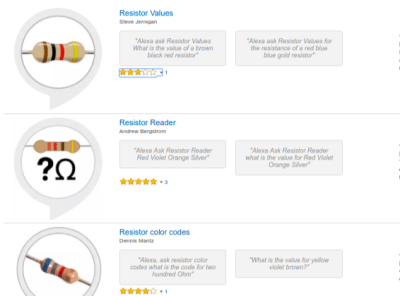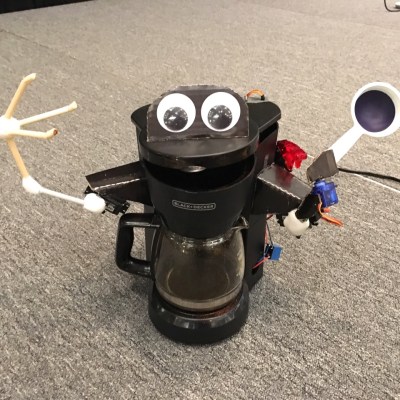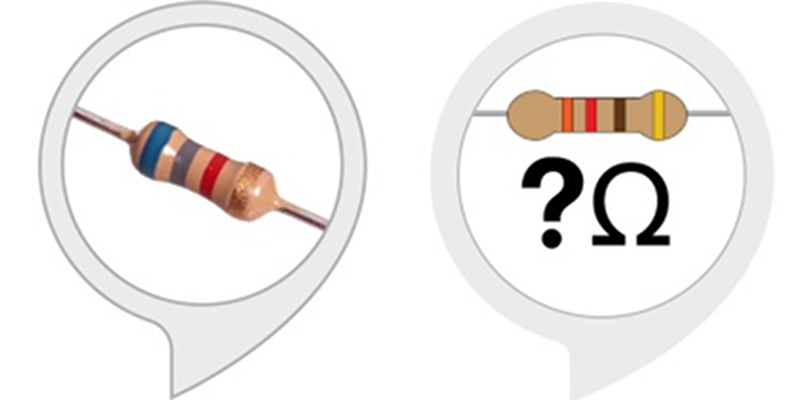Nothing makes us feel more like we’re on Star Trek then saying “Computer, turn on desk light,” and watching the light turn on. Of course, normal people would have left the wake up word as “Alexa,” but we like “Computer” even if it does make it hard to watch Star Trek episodes without the home automation going crazy.
There’s a lot of hype right now about how voice recognition and artificial intelligence (AI) are transforming everything. We’ve even seen a few high-profile types warning that AI is going to come alive and put us in the matrix or something. That gets a lot of press, but we’re not sure we are even close to that, yet. Alexa and Google’s similar offerings are cool, there’s no doubt about it. The speech recognition is pretty good, although far from perfect. But the AI is really far off still.
 Today’s devices utilize two rather rudimentary parts to provide an interaction with users. The first is how the devices pattern match language; it isn’t all that sophisticated. The other is the trivial nature of many of the apps, or — as Alexa calls them — skills. There are some good ones to be sure, but for every one useful application of the technology, there’s a dozen that are just text-to-speech of an RSS feed. Looking through the skills available we were amused at how many different offerings convert resistor color codes back and forth to values.
Today’s devices utilize two rather rudimentary parts to provide an interaction with users. The first is how the devices pattern match language; it isn’t all that sophisticated. The other is the trivial nature of many of the apps, or — as Alexa calls them — skills. There are some good ones to be sure, but for every one useful application of the technology, there’s a dozen that are just text-to-speech of an RSS feed. Looking through the skills available we were amused at how many different offerings convert resistor color codes back and forth to values.
There was a time when building electronics meant learning the resistor color code. With today’s emphasis on surface mount components, though, it is less useful than it used to be. Still, like flossing, you really ought to do it. However, if you have an Amazon Alexa, it can learn the color code for you thanks to [Dennis Mantz].
Don’t have an Alexa? You can still try it in your browser, as we will show you shortly. There are at least eight similar skills out there like this one from [Steve Jernigan] or [Andrew Bergstrom’s] Resistor Reader.
Sometimes Alexa Just Doesn’t Understand
The problem the way skills work is that Alexa strictly matches templates to figure out what skill to use. So if we were hanging out at a workbench someone might say, “What color is a 22K resistor?” and everyone would know — well, perhaps not the answer (red, red, orange) but they would at least understand the question. Not Alexa. If you install the first resistor color code skill we mentioned, you can ask questions like “Alexa, ask resistor color codes what is the code for 220 ohms?” Or, try “Alexa, ask resistor color codes what the value of brown black green is?”
There are a few skills that hook in a little closer with some overloaded words like “turn on.” However, that tends to confuse things when you say, “Turn on the Roku in the living room” versus “Turn on the Roku in the bedroom.”
 We know what you are thinking: If you don’t like it, learn the resistor color code. We don’t disagree. There are plenty of memory devices like “Bad beer rots our young guts, but vodka goes well.” If you don’t like that one, take your pick of the others. Be warned, some of them at the bottom of that link are patently offensive. Then again, shocking mnemonics are often easier to remember, including one about Batman that we didn’t see on that list.
We know what you are thinking: If you don’t like it, learn the resistor color code. We don’t disagree. There are plenty of memory devices like “Bad beer rots our young guts, but vodka goes well.” If you don’t like that one, take your pick of the others. Be warned, some of them at the bottom of that link are patently offensive. Then again, shocking mnemonics are often easier to remember, including one about Batman that we didn’t see on that list.
On the other hand, if you are getting your kids to help you sort resistors, this could be just the ticket. There are other Alexa skills that could be useful, too. There’s ASCII converter and since it only seems to report codes in decimal, there’s a skill for base conversion, too (or try this converter). For the true geek, there’s always this clock.
Hacking Alexa Skills
So we are still a long ways away from HAL 9000-level AI. On the other hand, this is a fertile ground for hacking. It seems hard to imagine that the best we can do is resistor color code and ASCII tables. We aren’t sure if it is that hard to do anything, or if it is just hard to think of something compelling. We probably don’t want “Alexa, program my Arduino.”
Want to experiment with building something smarter? The skill development kit is available and free and there are plenty of examples. If you want to see some non-trivial examples that work well, check out the integration of Google to Alexa (something Amazon is probably not crazy about) or the way an enterprising hacker has plugged Google Music into Alexa (you do need your own server to make this work). On the back end side, we covered a simple hack to control over a dozen outputs with one ESP8266. That should fire your imagination.

If you don’t have an Alexa-device, you can make one with a Raspberry Pi. Or, if you are lazy and have an Amazon account, you can use Alexa in any Web browser — sort of. Just add the resistor color code skill or your next killer skill to your Amazon account and hold the microphone button on the web app. You’ll probably have to authorize it to use your microphone the first time you try it. The Web-based tool won’t play music and probably has some other limitations, but you can add skills in the Alexa app and the browser version will use them. There’s also the Ubi app for Android phones. So getting your feet wet in development doesn’t have to cost a cent.
Is it worth learning to do this? We think so. Not only does it seem to be the wave of the future, but remember that just like you can build Alexa into a Raspberry Pi, that means you can also build it into your own projects. Voice-activated coffee pot? No problem. Conversational toys? Easy. What about a voice-controlled oscilloscope or logic analyzer. “Computer. Set trigger level to 25 millivolts.” Now that would be like Star Trek.















Hmmm, but that doesnt help if some of the clours look the same, esp. on those blue or green 1% resistors, where (to my eyes) red and brown looks the same, blue and green looks the same, and sometimes even purple looks like red to me, not to mention white and silver. Need some other spectrographic software that can read the actual colour, but nvm, easier to just grab my DMM and measure it.
Pffft… Here’s a REAL Challenge for Hackers:
“Sudo Alexa stop spying on me!”
:hammer-smash:
:roomba start:
No more problem (just be sure the roomba avoids pet messes or you will have some Jackson Pollock going on)
how do you know the roomba is not spying on you?
Roomba knows I’m too lazy to use an upright when I accidentally step in the cat food dish.
Ohhhh sure, blame it on the pet.
You are not in the sudoers file. This incident will be reported.
“We’ve even seen a few high-profile types warning that AI is going to come alive and put us in the matrix or something.”
Faulty assumptions lead to faulty conclusions. Anyway the greater worry is automation while making us more efficient, requiring less of us overall, happening at a rate that’s hard to adapt to.
I began monkeying around with electronics when the 5-tube table model was populsr. In that period I’ve developed trouble with colors, especially on old stuff where the colors aren’t so true anymore. But I still putter. The solid state stuff certainly released us from finding – or building – a power supply. I like your post.
I wonder what you do if you buy Alexa but your name is also Alexa and whenever your spouse asks you to go get some bananas or something they also get ordered from Amazon.
tell microsoft / apple / google to let their female robot voices shop on amazon for you?
I’d rather see an iPhone / Android app that I can point the camera at a pcb, or a pile of resistors, and have the application label each resistor value over the top of each resistor. OpenCV maybe?
How about using a PC / Java on your bench and a webcam on a cable that you can move around? Uses OpenCV.
http://hackaday.com/2014/02/16/rescan-automated-resistor-identification/
Amazon Alexa team is giving away free swag if you publish a skill before the end of the month. I have received 2 hoodies and 3 t shirts. I would plug my skills here but yall dont care….
I don’t want any t-shirts if they’re not Abercrombie-branded.
… waiting for brand war in comments …
I don’t mind branded shirts, as long as the logo is on the inside.
I don’t really appreaciate the habit to slap logos everywhere. Why do I want my shirt to read “Brooklyn” in faded print? I’ve never even been there.
As the Southern–USA–humorist, Lewis Grizzard, once said (sort of):
“If I were a woman, I’d strenuously object to having Gloria Vanderbilt’s name plastered across my butt on a pair of jeans which I had paid for. For that matter, I can’t understand why Gloria Vanderbilt would even WANT her name plastered across my butt.”
Don’t use your brain to store links. Store the linked up information instead. And Alexa can go to wherever stuff like Alexa should go. Which is not home. Especially not home.
Why should anybody use some ugly and internet-connection-depended cloud hipster closed source remote services for simple task of predefined voice commands?
Just use cvoicecontrol – it will work perfectly for that, without any spying, permanent internet connection and all that awful modern web2.0 stuff. Small simple program been here for decades. I think it’s even possible to compile it for something like ESP32.
Can you post any links?
Google ban you? It’s first link in search by “cvoicecontrol”.
We definitely live in strange times.
Apologies, if you are really banned.
http://www.kiecza.net/daniel/linux/
@Stanton, you need to work on your snark. The proper response: http://lmgtfy.com/?q=CVoiceControl
That web2.0 crap does not work in my latest Firefox. Don’t use web2.0 crap. It’s for hamsters.
Apologise, if you are really hamster.
Hm, no longer supported and revised 2002. This does not seem very useful.
This whole skill categorization by name thing is a non-starter. I’m not going to remember to ask Alexa to ask Resistor Color Code Skill what color my resistor is. This will be a hard-stop for Amazon unless they figure out how to get past it.
But I’m sure they already know that.
What I really want (have I mentioned this before?) is to be able to ask Alexa for a part, say a 22k 0603, and have it delivered to a predetermined spot in my workspace.
Electronics should not be as simple as “Ask Alexa for a part, say a 22k 0603”, because there are literally thousands of different 22k 0603 resistors out there. This is why part numbers exist.
Also, don’t tell an over seas contract manufacture to use any “el cheapo” 22k 0603 resistor…
A week later they will come back and say they where unable to find any “el cheapo” brand resistors. ;)
Well… a problem like this one doesn’t really exist: you can either measure it with a multimeter, Goole it (there are millions of online calculators where you input the color of each strip and give it a go) or buy it (and not mix up) in separate packages.
Based on all the artificial intelligentia who populate Google, Id say that AI is a fait accompli.
No AI here; you’ve got to do your own proofreading.
Quote [Al Williams]: “Computer, turn on desk light”
How quaint !!!
https://www.youtube.com/watch?v=H-zPIjJv8rA
Well, having the home automation system going haywire while watching one of those “space-bug-in-the-ships-computer-and-eps-condouits” could actually add to the experience. Like a 5D home cinema… :)
*-episodes
What about those accurate military grade resistor? 5 color bands, and the mystery resistor both starts and ends with red band?
The red band representing 2% tolerance was further away from the next band than the starting red band that represent the first digit ‘2’.
Not hot dog.
Or, or, I know, please Sir, I know. Learn the ***kin code. It starts Black=0, Brown=1, then it goes like the colours of the rainbow, Richard Of York Gave Battle In Vain (scratch that, Indigo and Violet are just Purple), 2,3,4,5,6,7 then Grey=8 and White=9. Simples! And the Tolerance values and Divide by 10 or 100, Gold, Silver. Can’t believe I could be bothered to type that. Ha.
Yes, I know Al Williams said it too but for what it is worth, Learn the ***kin code. Yhere I said it again.